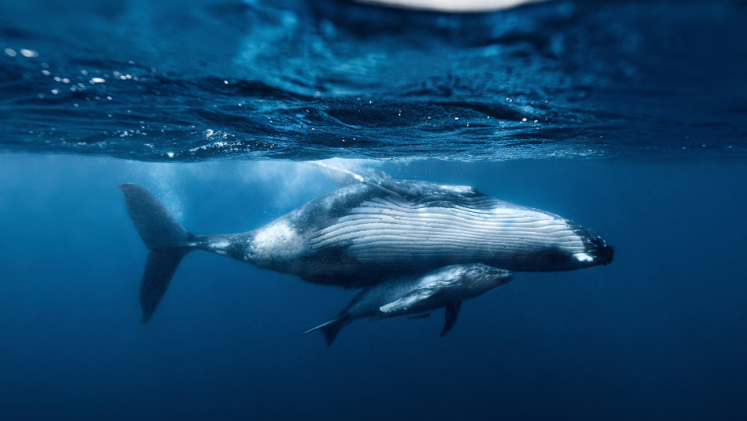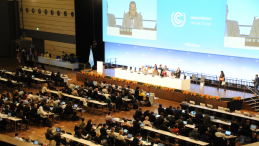Next week, at the High-Level Political Forum on Sustainable Development in New York, five out of the 17 Sustainable Development Goals will be reviewed, including SDG 14, “Life Below Water”.
Just before the review, in June, the 2025 UN Ocean Conference (UNOC3), which is tasked with supporting the implementation of SDG 14, took place in Nice, France. It marked a moment of increased visibility and urgency of actions to reverse the degradation of our oceans and provided key insights into the state of progress made towards ocean sustainability. In the days prior, events such as the One Ocean Science Congress, the Blue Economy and Finance Forum and the Ocean Rise & Coastal Resilience Coalition focused on scientific collaboration, sustainable financing, coastal resilience and raising awareness about the importance of the ocean, setting the scene for unprecedented collaboration between different sectors and decision makers. While the conference showcased rising political momentum, scientific innovation and new funding commitments, it also laid bare the deep implementation gap and ongoing tension between economic development and marine conservation.
New agreements to support oceans come alongside warnings of persisting challenges
At UNOC3 Member States announced new commitments and agreements on key ocean issues, which not only support oceans but also the implementation of other global agreements. For example, more than 20 new Marine Protected Areas (MPAs) were announced at UNOC3, advancing the global “30x30” goal of the CBD Kunming-Montreal Global Biodiversity Framework (KMGBF) aiming to protect 30 per cent of oceans by 2030. Such announcements demonstrated the intent of countries to work together to take important new steps to rescue ocean ecosystems from continuing loss and degradation. However, we must keep in mind both the scale of new solutions compared to the scale of the challenges they face, and the actions on the ground that follow. Up to this point, only 8 per cent of marine areas were designated MPAs, indicating the challenge of achieving the 30 per cent target in the remaining 5 years at the current rate of progress. Importantly, as mentioned by different speakers during the conference – “quality counts”, reflecting the wording of the 30x30 target (KMGBF Target 3) which states that areas should be effectively conserved and managed. This is important to keep in mind given that a recent assessment put the number of effectively managed MPAs at less than 3 per cent. Alongside the need to accelerate protection of critical areas in our oceans will be the need to design and make accessible ways to ensure the standard of management is sufficient.
The financing gap and blue economy trade-offs
The SDGs with their 2015–2030 timeframe are now well past their halfway point, and things are not looking promising for reaching the targets set for SDG 14. Less than one quarter of countries have formally approved marine spatial plans (Target 14.2), ocean acidification is worsening (Target 14.3) and the percentage of overfished fish stocks continues to increase (Target 14.4). Meanwhile SDG 14 remains the least funded SDG. At UNOC3 a collective of United Nations agencies and global partners launched the One Ocean Finance initiative to unlock billions in new financing opportunities from ocean-dependent industries and blue economy sectors to address this funding gap. However, it is worth remembering that despite a projected annual need of ~USD 150 billion to meet 2030 targets, less than USD 10 billion total was invested between 2015–2019.
The “blue economy” was a big focus at UNOC3 as a way to increase financing for activities supporting resilient livelihoods and environmental conservation action while promoting sustainable use of ocean resources; however trade-offs must be carefully considered. Activities under the umbrella of the blue economy include fisheries, tourism and marine transport, all of which have the potential to play helpful or harmful roles in ocean health depending on how they are managed. The blue economy approach seeks to encourage more sustainable ways of conducting these activities while supporting economic growth. Some contentious activities under the blue economy umbrella which some Member States and scientists drew focus to include marine energy and deep-sea mining (DSM). While leaders from many countries at UNOC3 spoke out supporting a global moratorium on DSM, other countries continue to push ahead with their plans to expand DSM activities. In addition, the planned expansion of marine energy infrastructure such as offshore gas extraction and wind farms will put ocean ecosystems under increasing pressure. Science-based decision-making will be critical in ensuring we avoid unsustainable outcomes for ocean health and rigorously evaluate trade-offs in the ocean-climate relationship.
Implications for SDG 14 at the upcoming High Level Political Forum (HLPF)
Coming out of UNOC3, a political declaration called for, among other things, greater protection and restoration of marine ecosystems, mobilizing finance to support vulnerable nations and combating marine pollution. Many noted, however, the absence of concrete steps to address important environmental concerns over potentially harmful industrial activities, primarily deep-sea mining, offshore drilling and bottom trawl fisheries. At the upcoming HLPF review of SDG 14 in New York, it is imperative that larger, more developed countries report on their actions to achieve ocean goals and raise their commitments until 2030. Evaluation of SDG 14 progress should consider qualitative metrics that ensure benefits for biodiversity and human well-being are considered alongside quantitative indicators. Greater transparency and accountability in public sector investments is also critical, particularly in recognition of activities which are interlinked with damaging ocean health. The United Nations Ocean Conference (UNOC3) served as a “lighthouse” signaling the political will to address critical threats to the oceans that we rely on to sustain us. The question is: will the signal be seen in time to save our precious ocean systems?





